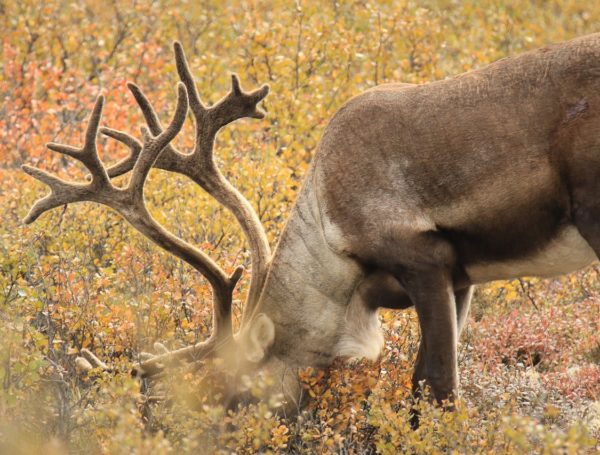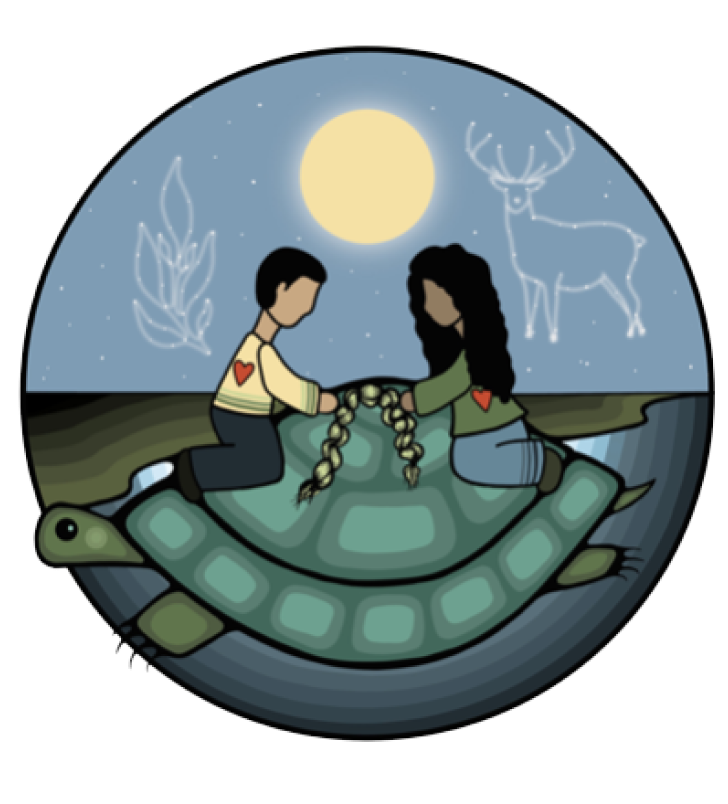Case Studies
Case Study 5: Exploring Biocultural Diversity Through Art
Case Study 5: Exploring Biocultural Diversity Through Art
Within the Sahtú region of the Northwest Territories, ecological dynamics have been shaped by the cultural diversity of Dene people and their connections to the environment for thousands of years. The biocultural diversity in this region is apparent in the different linguistic and cultural variations between communities, however the extent of biocultural diversity can be difficult to measure. The idea of using visual art in combination with scientific methods has been thought to be an effective way to measure and convey biocultural diversity, people’s experiences and their relationship with the environment.
A research study by Polfus et al. (2017) used this idea to illustrate the relationship between Dene cultural diversity and caribou intraspecific variation within the Sahtú region. This research study stemmed from the Sahtú Renewable Resources Board and local Renewable Resources Councils wanting to reframe their research approaches and management plans to include traditional knowledge and Dene laws. This study focuses on exploring questions about biocultural diversity and learning about the connections between Dene and Metis place-based knowledge and caribou variation.
The methods to this research involved several advisory group meetings with the research team, Elders and community members to develop research questions, identify methods, create a plan and share traditional and scientific knowledge about caribou. The traditional knowledge shared focused on the understanding of caribou variation from the Dene people, how they recognize the variation and the language used to explain it. The scientific knowledge focused on methods used to collect and analyze caribou DNA. Weaving together both of these knowledge systems allows for a well-rounded, more holistic approach to better understanding the variation of caribou and biocultural diversity in the Sahtú region. Visuals, such as a flow chart, were created and used to explain the research process and methods, as well as to help the Dene people share their own knowledge and understanding of caribou. A mind map was created to summarize and display the main themes of caribou behaviours, genetics, relationships, language and traditional knowledge from the Dene people.
This study found that the use of visuals during explanations of scientific methods and data were very beneficial and helped community members better understand the research. This brought forward the similarities and differences between the two knowledge systems, ultimately using art as a method of communication as the language barrier was a significant challenge.
“Traditional knowledge and language relating to caribou variation would have been much more difficult without the use of original illustrations and the visual participation of Dene collaborators”– Polfus et al. (2017)
By weaving Indigenous knowledge systems with western science, there is a potential to learn more about caribou variation through means that are not as western science informed, such as art, that are still able to discuss biodiversity and genetic variation within a region. The use of visuals helps the transfer of knowledge systems between the community and researchers, ensuring everyone can easily understand the research in a generalized, less scientific way.
Reference; Polfus, J. L., Simmons, D., Neyelle, M., Bayha, W., Andrew, F., Andrew, L., Merkle, B. G., Rice, K. & Manseau, M. (2017). Creative convergence: exploring biocultural diversity through art. Ecology and Society, 22(2). https://doi.org/10.5751/ES-08711-220204 https://www.ecologyandsociety.org/vol22/iss2/art4/





